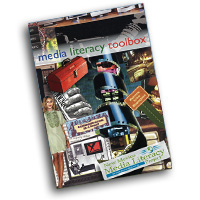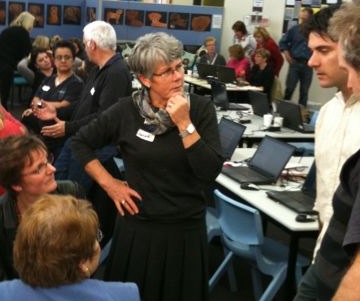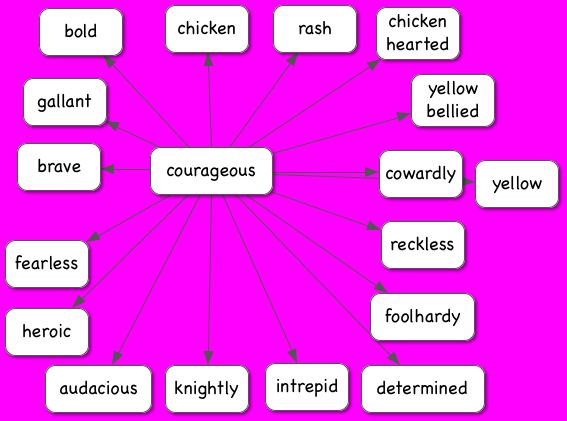
fno.org
|
|
| Vol 20|No 3|January 2011 | |
| Please feel free to e-mail this article to a friend, a principal, a parent, a colleague, a teacher librarian, a college professor, a poet, a magician, a vendor, an artist, a juggler, a student, a news reporter or to anyone else you think might enjoy it. | |
Digital Classroom Pedagogy 101By Jamie McKenzie, ©2010, all rights reserved.About author The presence of digital devices in a classroom is not always a blessing. Nor does it always contribute to student learning. To the contrary, there are modes of learning poorly served and actually diluted by the active presence of laptops and smart phones, while there are others that are dramatically enhanced. The companion article to this piece makes it clear that multi-tasking has its liabilities, nicely demonstrated by the video below . . . |
|
|
Girl proves texting is distracting by falling in mall fountain. No single diagram could capture all the different kinds of learning activities that might take place during a class — whether the class be a university lecture, a high school discussion or an elementary school problem-solving exercise, but the one shown below is sufficient to illustrate the main point of this article — that certain modes and activities benefit more from the active use of digital devices than others.
|
|
| Listening
It turns out that there are quite a few different kinds of listening, and that some of these should involve the eyes as well as a high level of concentration and focus. If you watch students in a high school or university classroom during a lecture/demonstration, some of the students may be so intent on writing down everything the professor says that they may actually miss a great deal of the presentation. These students feel that they are listening well and capturing the content well, but they may not be listening or recording in a away that includes understanding. To reach the understanding level, they need to consider the meaning of the sentences as well as the import of the professor's gestures, facial expressions and supportive visuals. When the material is challenging and the ideas are difficult to grasp, the student who watches and listens without capturing may actually attain a higher level of comprehension than the one busily typing or scribbling. After 5-10 minutes of presentation, this student may write down a few phrases that distill the most important points, concepts and insights. As the diagram shows, there is a difference between recording on the one hand and incorporating, understanding, challenging or distilling on the other hand. Faced with new ideas, a thinking student should ask if they seem reasonable and figure out whether they can be incorporated into existing schemas — pre-existing mental frameworks and understandings. This asking could be called "entertaining" — as the student wonders if the new ideas make sense, are reasonable and could get along with what the student already knows. If the student is busy scribbling, it is unlikely such consideration will take place. The best listening involves a good deal of challenging and distilling as opposed to mere capturing and recording. This kind of challenging and distilling does not flourish when the student is emailing, checking Facebook and texting friends. If the professor is any good at all, the material is stretching the thinking of the students. Even the smartest students should have to reach a bit. A dynamic speaker uses many hand gestures and facial expressions to help explain the difficult concepts. If the student is glued to a screen or a page, most of these gestures and expressions will be missed and the student will be at some loss. It is unlikely that a student will understand apotheosis and the white whale if they are Tweeting, Twittering1 and Facebooking while the professor expounds and elucidates. 1. Twittering defined by the Urban Dictionary |
|
|
Establishing Guidelines and Ground Rules This articles recommends negotiating guidelines and ground rules for the use of digital devices with students ranging from middle school and high school right up through university and graduate school. Some of these guidelines and rules might be quite firm and directly communicated by the teacher. Others might be a bit more flexible and up for discussion. Each of the learning modes or activities might deserve a different set of ground rules. When presenting difficult concepts, one teacher might require full attention for 10-15 minutes without the use of any digital devices or even paper note-taking. At the end of this time, the teacher might then ask all students to summarize, distill, challenge and incorporate the ideas into their prior schema using whichever tools work best for them. Another teacher might allow more latitude in terms of digital devices during the presentation after warning about the difficulty of the material and enumerating some of the risks. "If you wander about during the next 15 minutes, there is a good chance that you will fail to grasp the ideas I am sharing. As we have discussed in the past, learning style and strategy is a personal responsibility and a choice in this class. You are expected to master the material one way of another." |
|
|
Group Invention or Synthesis If 4-5 students are teamed to research and propose solutions to a challenging problem, the presence of digital devices and resources can be a huge advantage when the team is exploring possibilities. Classic problem solving begins with problem definition and lots of discovery. When the team is actually nailing down the definition, concentration is appropriate and the devices might best be laid aside — but not necessarily, as a well worded definition might profit from a quick visit to an online thesaurus Web site. There might be less reason for anyone to be texting friends, unless one of those friends is an expert in some aspect of the problem being considered. So long as the devices are being used for clarification and enrichment, it would be a shame to turn them off or ban them. On the other hand, if the devices are distracting some from the work at hand, they should be set aside. In school situations, the necessity of establishing rules and guidelines depends on the age and the responsibility of the students. Sometimes older students may show less responsible use than young ones. It is up to the teacher to watch and apply the right amount of guidance to fit the group. At the middle school level, a teacher might have two very cooperative groups capable of managing a great deal of latitude but three others with less capacity. This division might also persist up through the high school and university levels. As the group moves through the stages of problem-solving, there comes a stage that requires more convergent than divergent thought. As the group looks to build consensus and agreement, there will be less and less room for exploration and diversion. Differing respectfully requires a level of careful listening that may not survive much digital distraction. |
|
|
Observing/Watching When the teacher wants the entire class to critique a commercial — to identify the techniques employed to play on the heart strings of those watching, it is essential (not optional) that the students watch the video instead of looking down at their laptop screens or smart phones. Unfortunately, I have noticed that some in an audience of teachers may not focus on such a video without looking away and down. These are captivating videos with tremendous appeal, yet I may see 3-5 per cent of a group missing major segments. I find myself wondering where they have wandered? If watching the video is essential, this is a time when the teacher might lay down clear expectations, since those who look away are not even multi-tasking. The same might hold true when the teacher is demonstrating a technique or laying out six steps in a process the class is expected to follow. The teacher might say, "This is a time when I need 100 per cent eye contact as I show you how to search this Web site."
|
|
|
Finding/Exploring One of the best times for intense use of digital resources is when the class is meant to search far and wide for good ideas and inspiration. Such discovery learning would not really have been possible ten years ago in most classrooms, but it is now a basic element of almost any classroom that has access to the Web. If there is a key concept like courage that the class is exploring, the instructor might begin with students listing the first 5-10 words and ideas that comes to mind. They might then turn to one of the following online sources to add another 20-25 concepts and words. Each student will probably end up with a different collection of concepts. This type of exploration is digital discovery at its best. Divergent thought is especially well suited to the availability of such information resources.
|
|
|
Pondering/Composing
Resonance -- there is no wisdom without it. Resonance is a natural phenomenon, the shadow of import alongside the body of fact, and it cannot flourish except in deep time.
Perhaps students will use pencil and paper at a time like this to sketch out some thoughts. There is no single correct way to ponder and compose, but this article maintains that the student who reflects carefully on the ways devices influence thinking will be at an advantage over those who pay little attention to such questions. |
|
| Quietude
I am currently working on a book about purposeful wandering due to emerge in the Fall of 2011, Lost and Found. In a chapter devoted to quietude and reflection, I expand on the quotation from Birkerts above: Deep time?
During these times when the mind wanders and the person wonders, I found that there were hundreds of questions that people wondered about. They were curious about their children’s future and the world’s future. These being mostly teachers, they wondered how much longer decision-makers would flirt with high stakes testing as a reform strategy. Their questions fell into a dozen categories captured by the diagram below. Stillness allows the mind to open and taste possibilities that may otherwise remain buried. When we rush about physically from spot to spot and task to task, when our thoughts dart from project to project, insights that dwell at deeper levels of consciousness rarely surface to win our attention. Ideas that are simmering may never materialize. Even worse, the simmering may not occur at all if the mind’s pilot light has not been activated. A fundamental message of this chapter is the importance of awareness. If the thinker knows about this kind of thinking, she or he can learn to kindle imaginative fires. Sadly, it is rare that schools will educate the young about incubation and reverie. Much of our most imaginative thinking will occur in dream states that are elusive. Although this process of kindling is nowhere near as reliable as turning on a radio or an iPad, with practice it is possible to nurture such states of mind and to make incubation flourish in the background throughout many hours of the day and night. |
|
|
Copyright Policy: Materials published in From Now On may be duplicated in hard copy format if unchanged in format and content for educational, nonprofit school district and university use only and may also be sent from person to person by e-mail. This copyright statement must be included. All other uses, transmissions and duplications are prohibited unless permission is granted expressly. Showing these pages remotely through frames is not permitted. |
|


Outline of chapters and description of book available here.
Order your copy of The Media Literacy Toolbox from the FNO Store


 In this case, the teacher approaches the screen and points to a radio button. "You will need to click on this button before you enter the search terms because that will allow you to search only this Web site — not the whole Web." Five minutes later, some hands are raised wanting assistance because those students did not watch carefully, did not listen and did not click on the radio button. They are lost. Ironically, when students (even adult students) are lost in a situation like this, they are sometimes quick to cast blame on the teacher rather than acknowledging that their inattention contributed to their confusion.
In this case, the teacher approaches the screen and points to a radio button. "You will need to click on this button before you enter the search terms because that will allow you to search only this Web site — not the whole Web." Five minutes later, some hands are raised wanting assistance because those students did not watch carefully, did not listen and did not click on the radio button. They are lost. Ironically, when students (even adult students) are lost in a situation like this, they are sometimes quick to cast blame on the teacher rather than acknowledging that their inattention contributed to their confusion.
 There may be times when everything is unplugged and silence prevails as students dig down deeply into their most reflective selves. Sven Birkerts has an impressive way of grasping this kind of deep thought:
There may be times when everything is unplugged and silence prevails as students dig down deeply into their most reflective selves. Sven Birkerts has an impressive way of grasping this kind of deep thought: Hardly wasting time. It is this kind of sitting that allows the mind to wander, to wonder and to speculate. During the past few years I have asked dozens of audiences to list when they are most likely to find their mind wandering and wondering. They have listed all of the following plus many others:
Hardly wasting time. It is this kind of sitting that allows the mind to wander, to wonder and to speculate. During the past few years I have asked dozens of audiences to list when they are most likely to find their mind wandering and wondering. They have listed all of the following plus many others: